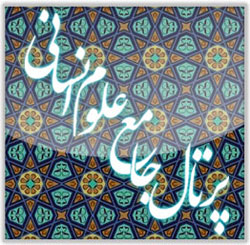An Analysis of the Historical Event of the Fīl Mosque in Mashhad in 1963 and Its Consequences
Keywords:
SAVAK documents, Islamic Revolution , Hasheminejad, Elephant MosqueAbstract
The bloody event at the Fīl Mosque in Mashhad, which occurred in October 1963—several months after the uprising of June 5 and as a protest against the repression of the clergy and the continuation of the Pahlavi regime’s anti-religious policies—constitutes one of the significant episodes in the history of the Islamic Revolution of Iran, particularly in the struggles of the people of Mashhad. The present study, employing a descriptive–analytical method and relying on official SAVAK documents, provides a detailed examination of this historical event and analyzes its causes, processes, and consequences. The findings indicate that the Fīl Mosque incident, along with its strategic outcomes, played a crucial role in the dynamism and continuity of the Islamic movement. Among its most important consequences were the prevention of the revolutionary movement’s decline, the revitalization of the spirit of the June 5 uprising, the unprecedented intensification of the political activities of the militant clergy, and the strengthening of solidarity among religious scholars and jurists across Iran and in Najaf. Furthermore, this event consolidated the position of religion and clerical leadership within society and heightened the political consciousness of the people. The Pahlavi regime, which had previously sought to intimidate the populace through the arrest of Imam Khomeini, was compelled—after this incident and the widespread reactions of the clergy and citizens—to yield and release Hashemi-Nejad, whose execution had been demanded by the prosecutor, after three months of imprisonment. This event shattered the regime’s illusory prestige and emboldened the people to engage in further criticism and protest. Most importantly, the incident transformed the aim of the movement from calls for reform to an explicit demand for the overthrow of the monarchical system, thus paving the way for the eventual victory of the Islamic Revolution.
Downloads
References
Davani, A. (1981). Nahḍat-e Rūḥāniyūn-e Īrān (The Movement of Iran's Clergy) (Vol. 11 vols.). Imam Reza (a.s.) Cultural Foundation.
Foulādzādeh, A. (1990). Shāhanshāhī-ye Pahlavī dar Īrān (The Pahlavi Monarchy in Iran). Kanun-e Nashr-e Andīshehā-ye Eslāmī.
Habilian Foundation. Javānmard-e Fāḍel (Noble Youth) Special Issue. Habilian Foundation(391).
Hāshemīnejād, A. (1996). Faryādgar-e Shahr-e Shahādat (The Cryer of the City of Martyrdom). Published by the Author.
Institute for Compilation and Publication of Imam Khomeini's Works. (2007). Sīr-e Mobārezāt-e Imām Khomeinī dar Āyineh-ye Asnād be Rivāyat-e Asnād-e SĀVĀK (The Course of Imam Khomeini's Struggles in the Mirror of Documents: According to SAVAK Documents) (Vol. 16 vols.).
Jalali, G. (2000). Mashhad dar Bāmdād-e Nahḍat-e Imām Khomeinī (Mashhad at the Dawn of Imam Khomeini's Movement). Center for the Documents of the Islamic Revolution.
Karbāschi, G. (1992). Haft Hezār Rūz-e Tārīkh-e Īrān va Enqelāb-e Eslāmī (Seven Thousand Days of Iranian History and the Islamic Revolution) (Vol. 2 vols.). Islamic Revolution History Foundation.
Ministry of Information Center for Historical Documents Review. (1998). Yārān-e Imām be Rivāyat-e Asnād-e SĀVĀK: Ketāb 5 "Shahīd Ḥujjat al-Islām Sayyid 'Abd al-Karīm Hāshemīnejād" (The Companions of the Imam According to SAVAK Documents: Book 5 "Martyr Hujjat al-Islam Sayyid Abd al-Karim Hasheminejad").
Ministry of Information Center for Historical Documents Review. (1999). Qiyām-e Pānzdah-e Khordād be Rivāyat-e Asnād-e SĀVĀK (The 15 Khordad Uprising According to SAVAK Documents) (Vol. 9 vols.).
Rahnama, M. R. (2012). Shenāsāyi va Wajh-e Tasmiyeh-ye Ma'āber, Maḥallāt va Amāken-e 'Omūmī-ye Bāft-e Qadīm-e Shahr-e Mashhad (Identification and Naming of Thoroughfares, Neighborhoods, and Public Places in the Old Texture of Mashhad City). Sokhan Gostar.
Rouhani, M. A. Interview available in the Oral History Archive of the Astan Quds Razavi Center.
Downloads
Published
Submitted
Revised
Accepted
Issue
Section
License
Copyright (c) 2025 Seyedeh Ozra Hasheminejad (Author); Ardeshir Asadbeigi

This work is licensed under a Creative Commons Attribution-NonCommercial 4.0 International License.







